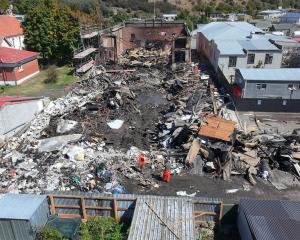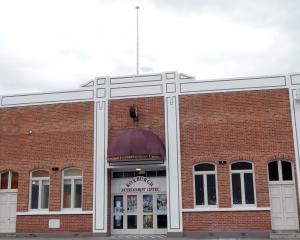One of New Zealand's rarest birds moved into its new home in the Gibbston Valley yesterday, following a plane ride from Rotorua where it had lived since hatching on November 1.
The yet-to-be-named falcon was brought south by Peregrine Winery - the winery itself named after the genus name for the falcon - which hopes the male chick will mate and become part of a base population of Gibbston Valley falcons.
Peregrine brand ambassador Greg Hay said it was a "very rare opportunity" to bring the bird south and while it was a bird of prey, that was not the primary aim of introducing it to Gibbston.
"It's an Eastern falcon. Its parents came from Southland and ... were used for breeding in Rotorua.
"[We're hoping to use it] to build the numbers of falcons back up. There are one-tenth the number of falcons as there are kiwis [in New Zealand].
"They are the raptors of the skies; they don't have any predators, except for cars and wire fences.
"They're always out hunting things flying around and they can keep an area clear of birds like starlings or blackbirds."
The falcon is the winery's mascot and is pictured on the $20 note and was named the New Zealand Bird of the Year recently.
Because of the bird's endangered status, "quite a few hoops" were jumped to secure the bird, Mr Hay said.
"You have to make sure that you are serious about the conservation ... there's a lot of pre-monitoring and a lot of post-monitoring."
The falcon hatched at the Wingspan Birds of Prey Trust of New Zealand centre, which Peregrine Winery had sponsored for the past 12 years.
Additionally, the winery sponsored the Fiordland Conservation Trust and its work with the saddleback birds.
"Without that we probably would not have the rights to do this."
In the 1970s, the population numbers of the falcon declined because of the types of pesticides being used, which were then ingested by the birds' prey.
At present there are thought to be about 1500 falcons in the South Island and the same number in the North Island.
While falcons ate live prey, including other birds, they generally did not attack people, Mr Hay said.
After a ride on the plane - seated in the cabin beside Mr Hay - the chick was quickly transported to its purpose-built home where it would remain for about three weeks, being fed up to four times a day.
The bird's welcome meal was a one-day-old chick from the Tegel hatchery, which was "already dead", but Mr Hay said he would be sourcing rabbits and other birds over the coming weeks.
It was important the falcon's diet comprised food it would be hunting once it was released.
Once the lid to the falcon's home was opened, the bird would know "Gibbston Valley is its home" and after gathering wing strength it would begin roaming the skies.
"At six months or a year it may decide to go and find a mate and live in the hills somewhere, or it could decide to continue to live here."
If it "moved" from the winery, another falcon would be introduced and the process would begin again, Mr Hay said.












